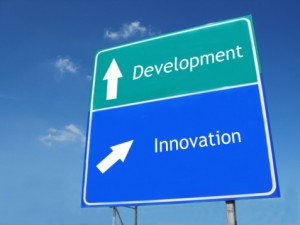 Patent professionals can do a better job providing patentability review, or “opinion,” services for innovators. As most readers would recognize, a patentability review assesses whether the invention to be claimed will meet the legal requirements for patentability. In the US, this entails an assessment by a patent attorney, which can be based on a formal or informal search, whether the client’s invention is novel and non-obvious over the prior art. The rules by which a patent attorney makes a determination of patentability are well-established and would not be considered controversial by most experienced practitioners. Nonetheless, as an IP Strategist who works exclusively with clients engaged in developing and delivering meaningful innovations to consumers, I know that these entrenched patentability assessment practices deserve retooling for those clients who can be classified as “innovators.” To this end, I believe that the way the patent profession addresses the patentability of innovations fails to properly consider the non-standard nature of such products and technology when assessing the scope of patent protection available.
Patent professionals can do a better job providing patentability review, or “opinion,” services for innovators. As most readers would recognize, a patentability review assesses whether the invention to be claimed will meet the legal requirements for patentability. In the US, this entails an assessment by a patent attorney, which can be based on a formal or informal search, whether the client’s invention is novel and non-obvious over the prior art. The rules by which a patent attorney makes a determination of patentability are well-established and would not be considered controversial by most experienced practitioners. Nonetheless, as an IP Strategist who works exclusively with clients engaged in developing and delivering meaningful innovations to consumers, I know that these entrenched patentability assessment practices deserve retooling for those clients who can be classified as “innovators.” To this end, I believe that the way the patent profession addresses the patentability of innovations fails to properly consider the non-standard nature of such products and technology when assessing the scope of patent protection available.
This disconnect was clearly on display as I spoke with a new client recently. The CEO of this company expressed frustration about an assessment by a patent lawyer that the company’s medical device innovation was not patentable. If successful, the company’s innovation would eliminate an expensive daily pill used to treat a chronic disease suffered by millions of people throughout the world. The elimination of medication has been a long-felt need, and the future of his company looked promising, at least until he heard the bad news that the medical device did not appear to be patentable. He asked: “How can this be? The users didn’t want to give the product back after the testing period was over! The doctors were shocked at the results. Everyone wanted the device to be available yesterday, and they were disappointed when I told them it would be a while before the device was available for sale. How can a product that could be life-transforming for so many people not be protectable!?”
In view of this highly enthusiastic response from testing of this medical device, it was surprising to the client when his previous patent attorney told him that a patent on the device was not possible because prior art devices ostensibly exhibited the same features and operating parameters. Notably, the attorney did not consider the clinical results to be pertinent to an assessment of whether and to what extent the device could be patented. The device looked and operated like other products in the market, so the conclusion was that no patent protection could be obtained.
Since investment in a new medical device company is largely dependent on whether broad patent protection is available, this advice could have been the death knell for this company. Even worse, patients who could benefit from this non-pharmaceutical treatment would be denied this improvement because there would be no assurance that a company bringing this medical device to the market would be able to recoup its investment. Fortunately, the CEO of this company did not accept this patent lawyer’s advice as definitive because, quite simply, it did not make sense, and he sought a second opinion from me. After few minutes discussing the medical device innovation and the clinical results, I was able to tell him that his product was not only patentable, but that it was possible that we could be able to obtain broad US patent rights for his company in a year or less, using the TrackOne process in conjunction with a robust patent development effort. Needless to say, the CEO was thrilled with this information, and we are now moving forward with defining a strategy for drafting comprehensive protection for the medical device.
Readers are probably wondering why my patentability assessment was so markedly different from that of a patent attorney peer. For the past 12 years I have worked almost exclusively with innovators. And, this makes a difference to the advice I provide to those seeking patent protection. In my world, the way the patentability of an invention and that of an innovation are addressed are different because an invention is different from an innovation: an invention comprises a new and non-nobvious improvement over other products and technology that have solved the same identified consumer need, whereas an innovation is a product or technology that solves a previously unmet consumer need, irrespective of the newness of the product or technology. Said another way, an invention solves a previously met need in a new way, and an innovation solves a previously unmet need.
As an example of this difference, consider a new tire design. In one instance, the new tire design performs as a tire is intended to do, that is, in conjunction with other tires, participates in the movement of a vehicle from one place to another. In this case, the new tire design is an “invention.” On the other hand, a design for a new tire that will allow the car to be driven for 100 miles after the tire is punctured by a nail is an “innovation” because, in this context, this defined consumer need has not been met previously. (Yes, I know this is an already a solved problem.) The tire invention is an improvement on the existing performance of the tire; the latter tire innovation transforms the performance expectations of the tire. When considering the patentability of the tire innovation, the designs of prior art tires are irrelevant because they cannot provide the same function. Instead, prior art tire products (if any) that a allow a tire to run flat after nail puncture are the relevant prior art to be considered in an assessment of patentability. When looked at from this vantage point, it is doubtful that there will be much prior art that needs to be reviewed because the problem has not been solved before!
The invention/innovation distinction also matters when defining the claim scope. If one aligns an innovation against the irrelevant prior art, claims that define the innovation against that prior art will erroneously narrow the starting point for protection. That is, setting the boundaries for protection of the innovation in relation to prior art necessarily locates the former within an existing playing field—here the products and technology that do not meet the customer’s need–even when the innovation should be set in a different playing field, that that is defined by the customer’s solved need. Indeed, my clients frequently are able to avoid complex prior art rejections during prosecution because the the claims are defined as being outside the bounds of previously disclosed products or technology.
Applying this concept to the tire example, if the run-flat tire’s claims are defined against the framework of prior art tires that fail immediately when punctured by a nail, claims drafted around the tire innovation will be necessarily constrained by tire designs that have no bearing on the ability to generate run-flat tire performance. To prevent this from happening, the unique nature of the innovation must serve as the focal point of the patent protection strategy. By approaching claim drafting from this direction, the innovative performance of our tires drives the claim drafting and resulting claim scope. If there is no prior art with comparable performance, we are entitled to broad claims from the patent examiner.
I should note that it took me many years to be able to articulate how prior art review should be modified to better serve the needs of innovators, so I get why it might be hard for my patent peers to immediately understand the point that I am making. Most patent attorneys work only rarely with innovators, if they would know that their client was an innovator in the first place. As to this latter point, when engaging with a patent attorney on a professional basis, most clients would not self-identify as either an “inventor” or an “innovator,” as there is no officially recognized distinction in the profession between these two categories of those who might seek patents, even while the company is likely to self-identify as an innovator to customers, investors, etc. So, we come full circle: there is no difference between how inventors and innovators are serviced by the patent profession because there is no recognized difference in the services that are offered by patent professionals.
To solve this dilemma, innovators, and those patent professionals servicing them, need to recognize that if you’re not innovating how you generate patent protection, you’re likely not able to effectively capture the full patent value of the innovations. In my practice, I am the one who identifies whether a potential new client is trying to protect an “invention” or an “innovation.” If the former, I refer them to a trusted colleague that will do a good job patenting their invention at a fair price. If the latter, we will engage to generate broad protection for the innovations that they are bringing to their customers. The good news is that most of my new clients these days are innovators who find themselves reading my posts and deciding this approach is the right one for them. I would love to hear from more of you who recognize and value the difference between protecting innovations and inventions.


